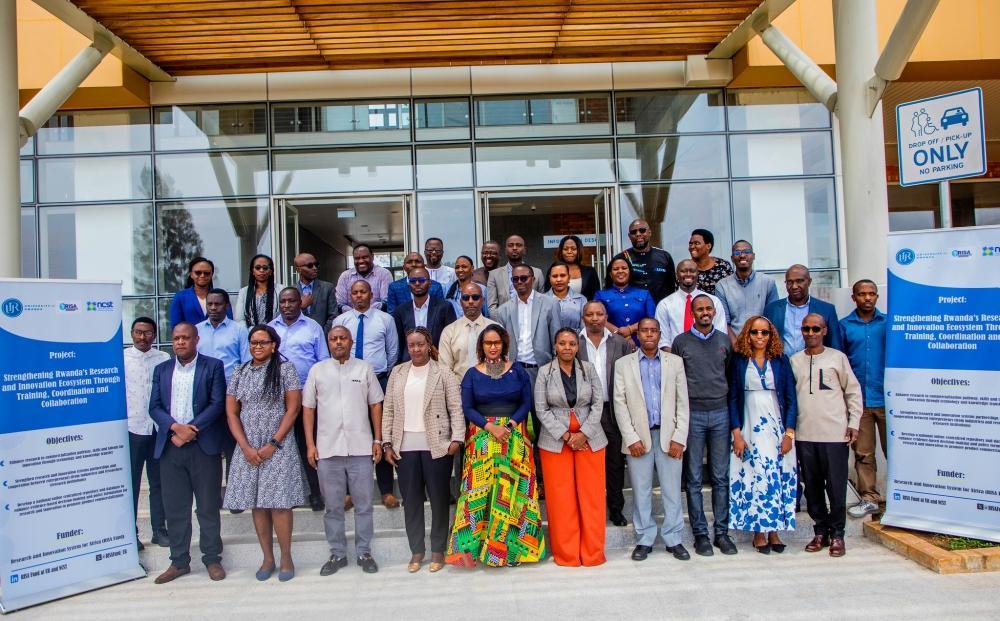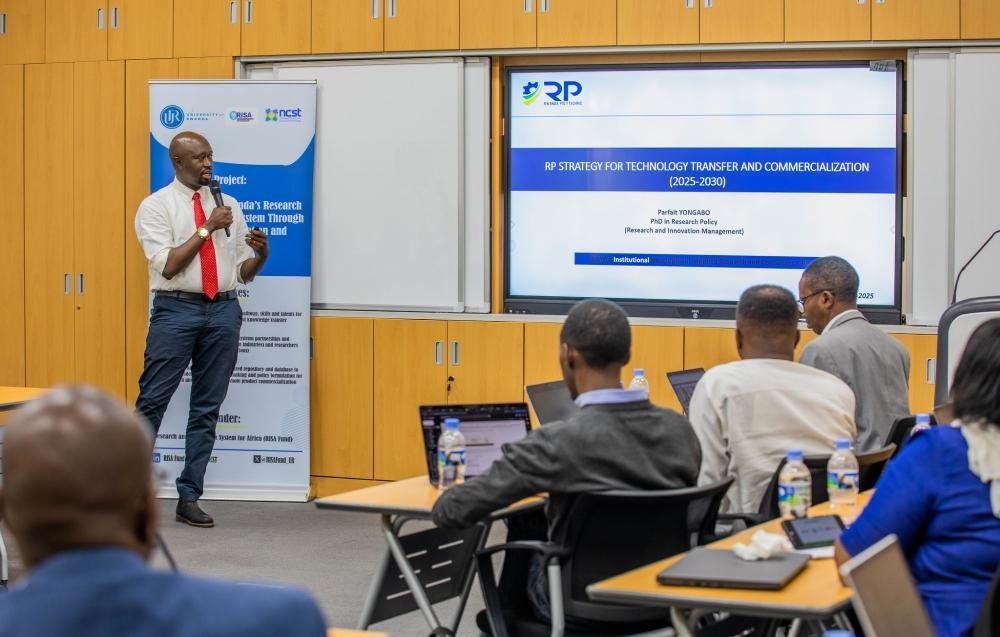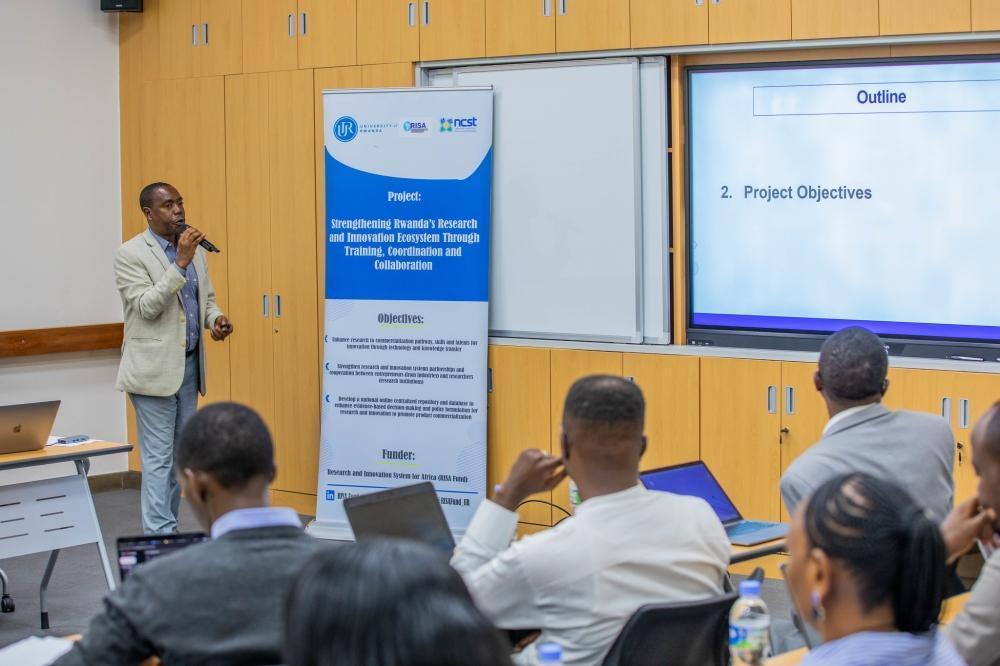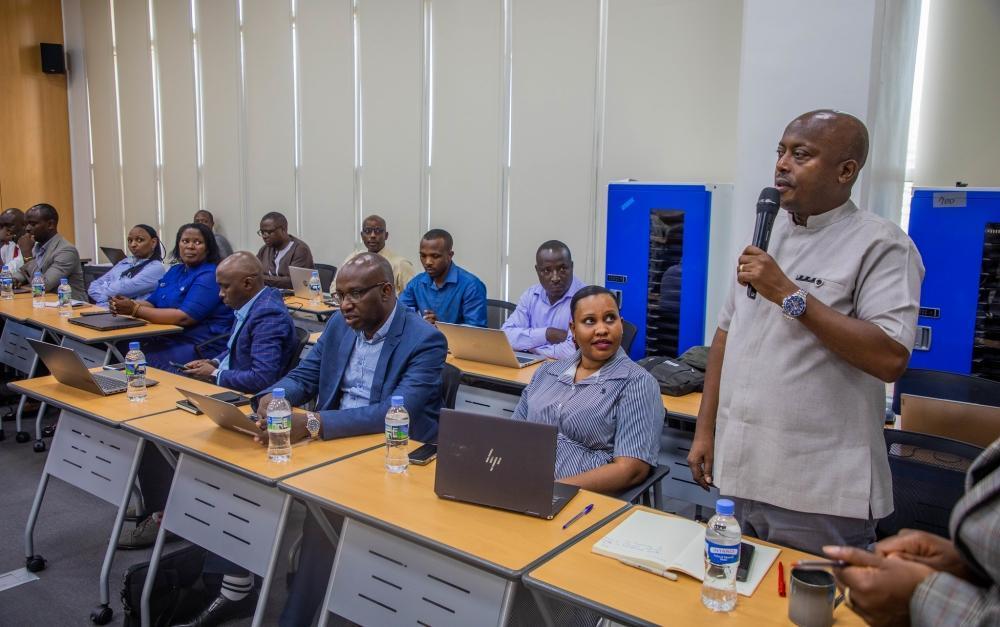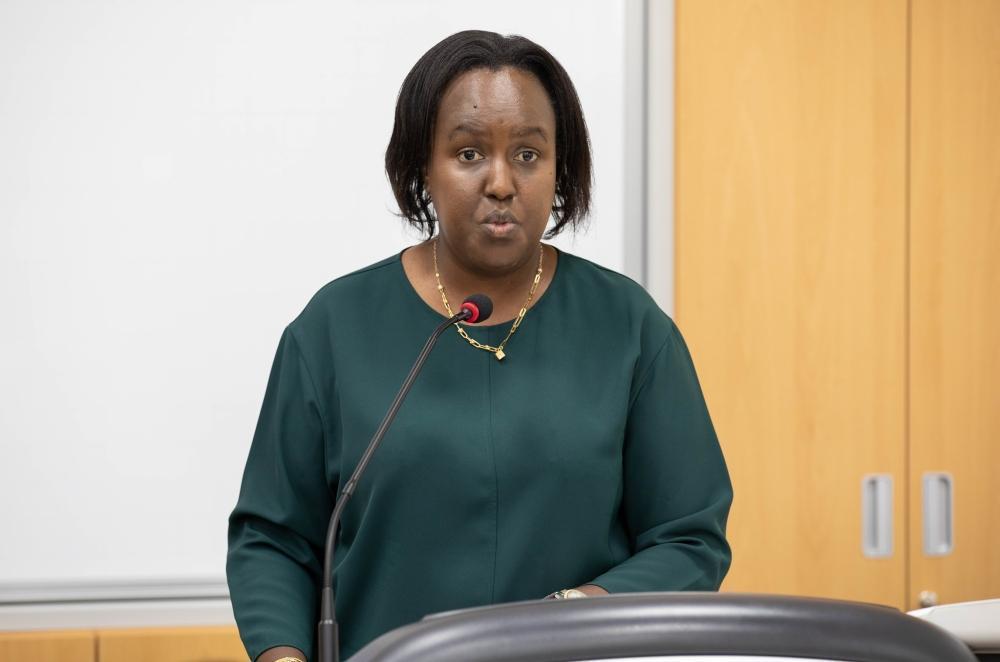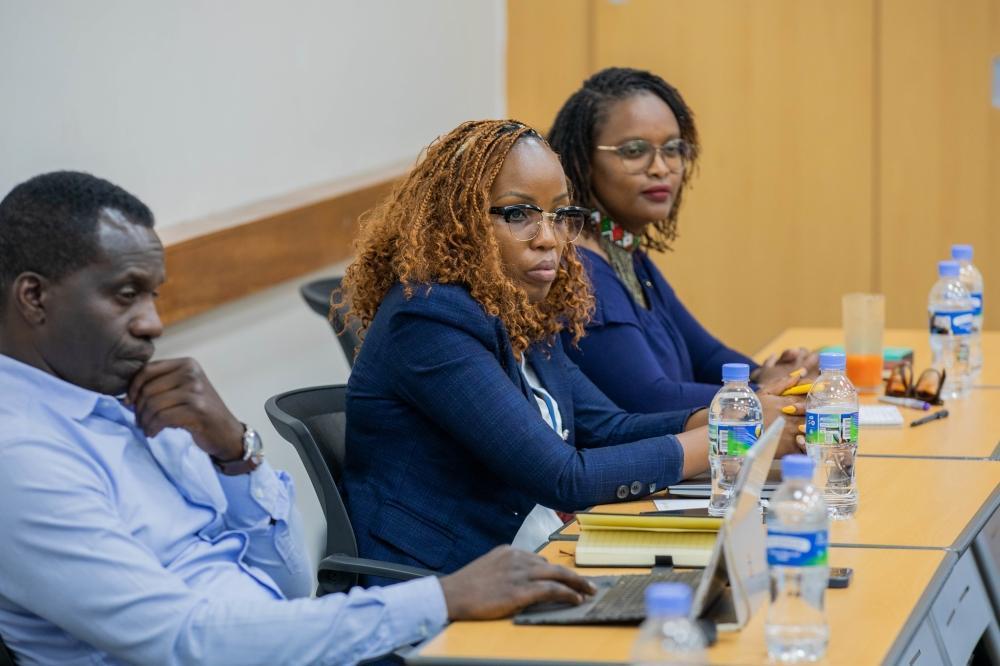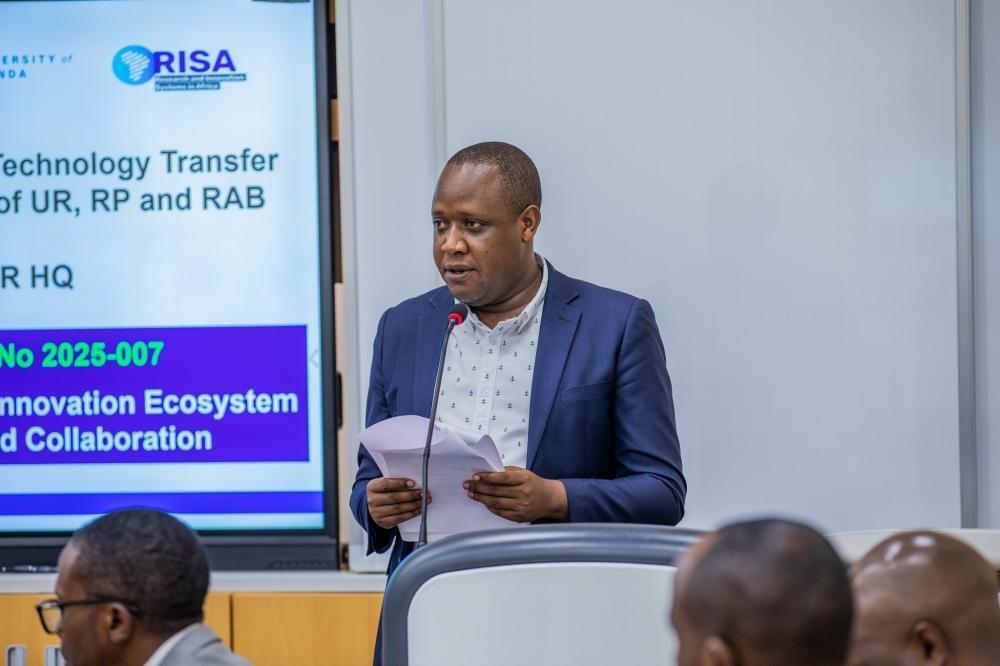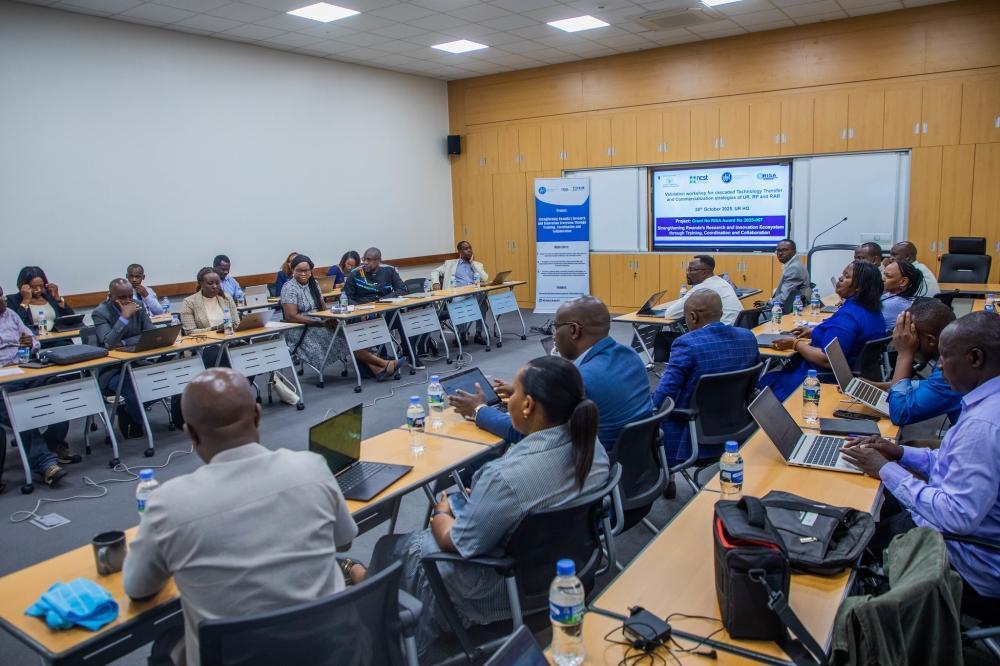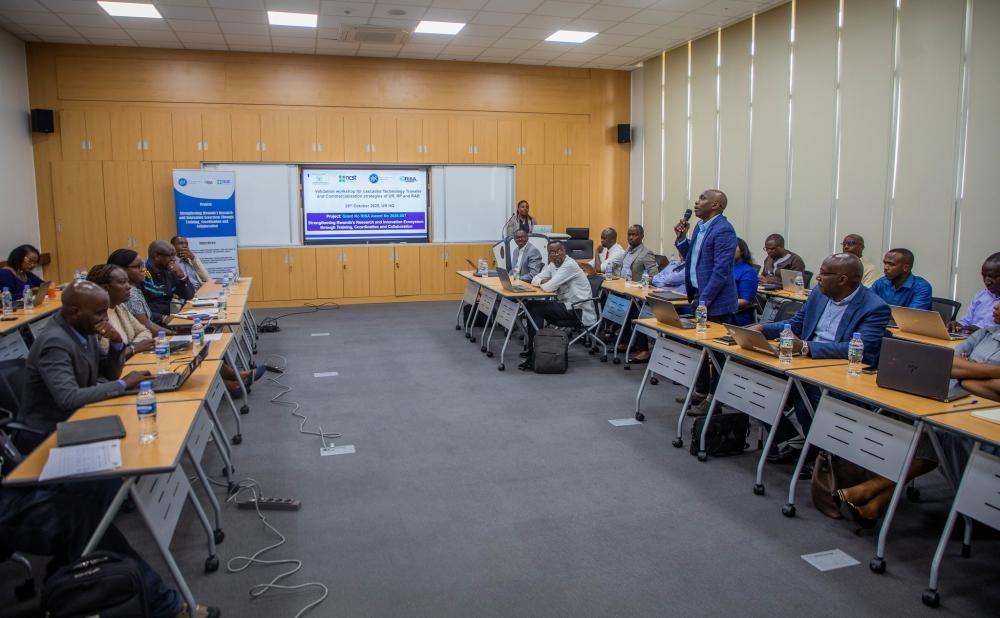Africa-Press – Rwanda. Three technology transfer and commercialisation strategies have been developed for the University of Rwanda (UR), Rwanda Polytechnic (RP), and the Rwanda Agriculture and Animal Resources Development Board (RAB).
The strategies were designed under the project “Strengthening Rwanda’s Research and Innovation Ecosystem through Training, Coordination, and Collaboration.”
The project was funded through the Research and Innovation Systems for Africa (RISA) programme, supported by the UK Foreign, Commonwealth and Development Office (FCDO).
The initiative aims to enhance research and innovation ecosystems across Africa.
The project seeks to build national capacity through Training of Trainers (ToT) programmes to boost research, entrepreneurship, and innovation skills.
It promotes collaboration between academia and industry to drive market-relevant innovations.
Strengthened systems will enable effective technology development and knowledge transfer.
The initiative is reinforcing research and innovation partnerships between entrepreneurs from industry and researchers from academic and research institutions.
The strategies were designed under the project “Strengthening Rwanda’s Research and Innovation Ecosystem through Training, Coordination, and Collaboration.”
It will also develop a national online centralised repository and database to enhance evidence-based decision-making and policy formulation for research and innovation, promoting product commercialisation.
The University of Rwanda (UR), in collaboration with the National Council for Science and Technology (NCST), on October 28, organised a validation workshop for the three institutions’ strategies at the University of Rwanda Headquarters.
Prof. Damien Hanyurwimfura, Ag. Director of ACEIoT and the Principal Investigator of the project, said the three strategies for UR, RP, and RAB align with the national strategy developed last year with support from the RISA fund.
“The project aims to enhance research and facilitate the translation of research outputs into commercial products — in other words, to commercialise research conducted at universities,” he said.
Prof. Damien Hanyurwimfura, Ag. Director of ACEIoT and the Principal Investigator of the project speaks at the workshop.
Currently, he noted, most research carried out at UR, RP, RAB, and other laboratories remains within institutions and is not taken to market for commercialisation.
“That is why we decided to see how we could change that. We need to support the transfer of research from universities to industry for practical application and to make an impact on society,” he explained.
Implementation of the strategies
Each strategy, Hanyurwimfura said, will have a national office to monitor implementation.
“At the University of Rwanda, we have the Centre for Entrepreneurship, which will be responsible for implementing the strategy. RAB and RP also have similar offices. Each institution will therefore have an office responsible for facilitating the transfer of research to industry for application,” he noted.
Hagurwimfura added that funding will ideally come from different sources.
“We are also looking for grants and internal funding. As this particular initiative was funded externally, we hope to secure similar support to implement it fully.”
The project seeks to build national capacity through Training of Trainers (ToT) programmes to boost research, entrepreneurship, and innovation skills.
Research at RAB, UR, and RP is conducted by scientists, lecturers, and students. A student may conduct research under the supervision of a lecturer, making it a joint effort.
He said there are various models for transferring university research to industry for application.
“The technology transfer process will help them register their intellectual property (IP) with RDB for patenting and connect them with industries interested in adopting their innovations. Sometimes, a researcher may have a good idea but lack the funds to develop it. In that case, a company interested in the idea can take it up and implement it. Alternatively, researchers can create their own start-ups to commercialise their innovations, or sell their intellectual property to another company,” he explained.
Francoise Tengera Kayitare, Deputy Vice-Chancellor for Finance at UR delivers remarks at the workshop.
Francoise Tengera Kayitare, Deputy Vice-Chancellor for Finance at UR, said these strategies are critical to transforming research and innovation into tangible economic and social impact.
“UR, RP, and RAB have demonstrated a shared commitment to transforming Rwanda into a knowledge-based and innovation-driven economy, ensuring that research and innovations emerging from these institutions are not only academically sound but also socially relevant, commercially viable, and nationally impactful,” she noted.
She added that the strategies validated will only bear fruit “if we continue to nurture partnerships, mobilise resources, and build strong institutional capacities for technology transfer, incubation hubs, and commercialisation.”
Esperance Munganyinka, Head of the Department of the National Research and Innovation Fund (NRIF) at NCST, said there is a critical need to strengthen the research and innovation ecosystem to sustain Rwanda’s social and economic growth agenda and achieve the Vision 2050 targets.
The initiative aims to enhance research and innovation ecosystems across Africa.
“This includes establishing institutional policies, strategies, and frameworks that promote technology transfer and commercialisation of research outputs. The development of these strategies represents a key step.
“Some of their goals include fostering innovation and technology commercialisation, enhancing entrepreneurial mindsets, skills, and competencies in education, and strengthening collaboration between researchers and the private sector to support commercialisation and impact,” she said.
So far, 60 researchers and innovators have been trained as trainers in technology transfer, entrepreneurship, and research commercialisation. A national research and innovation repository has also been developed.
Daniel Niyibizi, Research Fellow at RAB, said RAB’s technology transfer and commercialisation strategy seeks to turn research into real impact.
“We have to connect innovations from labs to Rwandan farms, boost innovation adoption, and promote value addition,” he said.
He added that the strategy is timely given that commercialisation has been underdeveloped.
“There were gaps in collaboration between industry and the sector. There will now be resource mobilisation and public–private partnerships for agricultural technology transfer and commercialisation. The strategy will also strengthen intellectual property and licensing systems, and we will develop a centralised digital portal,” he said.
He added that a commercialisation unit with adequate infrastructure will support the agricultural technology transfer strategy.
Parfait Yongabo, a researcher at RP, said institutional capacity and funding schemes for technology transfer and commercialisation will be developed under the strategy.
Some interventions include developing IP policies, establishing technology transfer offices, enhancing business incubation centres, and developing RP’s technology commercialisation business model.
Developing joint projects with industries, strengthening the alumni network (including RP graduates and incubation alumni), and organising technology exhibitions and networking events are part of the strategy’s implementation.
Other interventions include establishing and strengthening laboratories and maker spaces for prototypes and product development, setting up mass production facilities, technology showcasing spaces, and commercialisation seed funds. Mobilising funds, venture and reinvestment schemes, and creating income-generating and incentive mechanisms are also part of RP’s strategy.
“Implementation mechanisms include ordinary budgets, grants, and partnerships, among others,” he said.
Participants to the workshop included representatives from UR, National Council for Scince and Technology (NCST), Rwanda Polytechnic (RP), Rwanda Agriculture and Animal Resources Development Board (RAB), ILDP, RICA.
UR’s strategy will also establish adequate infrastructure to support technology transfer and commercialisation, set up and operationalise a technology transfer office, create an incentive programme to promote a culture of innovation and commercialisation, and establish funding instruments to support technology development facilities and infrastructure.
Participants to the workshop included representatives from UR, National Council for Scince and Technology (NCST), Rwanda Polytechnic (RP), Rwanda Agriculture and Animal Resources Development Board (RAB), ILDP, RICA, MINECOFIN, MINICT, AIIPITT, RDB, NIRDA, ICT chamber, RISA fund, and FCDO representatives.
The project seeks to build national capacity through Training of Trainers (ToT) programmes to boost research, entrepreneurship, and innovation skills.
For More News And Analysis About Rwanda Follow Africa-Press

